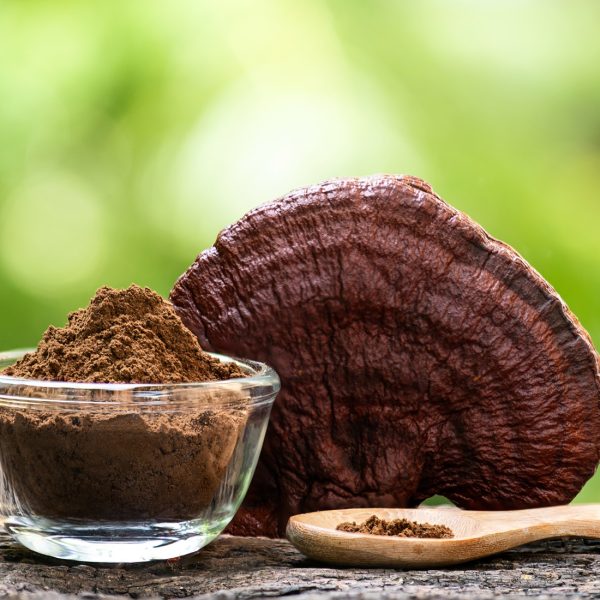In this review, we conclude that herbs are not a public hazard, and that humans have always been very good at avoiding plants that upset them.
CBD and pain

Pain, especially chronic pain, can be extremely debilitating. In 2016 the British Pain Society researched the population to find that more than two fifths of the UK population (around 28 million adults) live with pain that lasts for 3 months or longer. Overall, 14.3% had chronic pain that was either moderately or severely disabling (1). This problem is not just prevalent in the UK but is common globally.
Common treatments include opioids like codeine (or in extreme cases morphine), and NSAID’s like ibuprofen. The problem is that the long-term use of NSAID’s can lead gastrointestinal problems like stomach ulcers, and in some cases issues with kidneys and the liver. Opioids are also highly addictive and have caused a devastating opioid crisis leading the destruction of hundreds and thousands of lives (2). Furthermore opioids do not actually work very well for neuropathic pain (3).
What causes pain is multifaceted, and varies from person to person. For example the cause can be inflammatory in nature as pain is one of the five symptoms of inflammation (along with heat, swelling, redness and loss of function). This is predominantly down to the immune system. Neuropathic pain is caused by the nervous system, and flare ups are often spontaneous without stimulation. Neuropathic pain can feel like electric shocks, tingling, numbness, pins and needles, shooting, stabbing or burning pain. There is a neurotransmitter called substance P that acts as a nociceptor, meaning it detects pain. It is found in specific sensory nerves, predominantly in the brain and spinal cord and reacts to potentially damaging stimuli by causing pain. It is an important factor in both inflammatory and neuropathic pain.
There is also mental and emotional factors when it comes to how we experience pain. Though of course some events and conditions cause us to feel pain, in many cases (in particular chronic pain conditions) the way we perceive pain effects the severity. This is why some people use modalities such as hypnotherapy to deal with chronic pain conditions.
The endocannabinoid system and CBD

Thankfully there are solutions and a particularly useful one is the use of cannabidiol (CBD). This is a molecule from cannabis and hemp which are both in the Cannabaceae family. Both clinical studies and real-world evidence show that CBD can be helpful for pain issues ranging from dysmenorrhoea to multiple sclerosis.
Here we will briefly explain what the endocannabinoid system is and how it is involved with pain, as well as what CBD is.
The endocannabinoid system (ECS) was discovered in Israel around 30 years ago, which in science terms is very new (8). Different receptors such as CB1 and CB2 were discovered, as were the endocannabinoids that bind to them. Endocannabinoids are neurotransmitters that the body makes naturally, and they bind to endocannabinoid receptors. These include anandamide, derived from the Sanskrit word for “bliss”. Anandamide binds to the CB1 receptor and when stimulated it gives us pleasurable feelings. Phytocannabinoids are plant derived compounds that also bind to our cannabinoid receptors. CBD is an example of this, as is THC (there are many more phytocannabinoids too).
The endocannabinoid system’s main function is to regulate the nervous and immune system, and to promote a state of balance and equilibrium (also known as homeostasis). This is why it is implicated in so many different illnesses and conditions. Both inflammation and the nervous system are frequently involved with pain.
Two of the main receptors in the ECS are the CB1 and CB2 receptors. There are CB1 receptors that “monitor” the passing on of pain signals from painful stimuli, and research shows these are heavily involved with the analgesic effects of CBD and THC (tetrahydrocannabinol- the psychoactive part of the plant)(4). CB2 receptors are also present on the microglial nerve cells, which are specific immune cells for the nervous system that remove damaged nerves and infection. They are involved with inflammation. It is through this that CB2 has been shown to be important for reducing cytokine-mediated neuroinflammation which can be a very significant factor for pain (5). There are a whole plethora of ways that the ECS is involved with pain, and here we have explained just a couple.
Both anecdotal and clinical evidence has shown it has a therapeutic effect for an array of different things including issues with pain. CBD is a non-psychoactive part of the cannabis plant so does not make people “high”, which is partially why it is such a welcome medicine for many.
Pain signals are sent from one neuron to the other in a forward-facing direction. However, the endocannabinoid system’s signals fire in the opposite direction (a process called retrograde signalling). This means the endocannabinoid receptors are on the cell that are producing the pain signal. If we activate these receptors through phytocannabinoids like CBD or THC , it means less pain signals are released which is why CBD can be analgesic.
Pain conditions CBD is good for and evidence

CBD is often used for pain associated with inflammation, exercise, joint pain, arthritis, period pain and sometimes even to help deal with pain from serious conditions like cancer pain.
One way that it is suggested that CBD affects pain is through the GPR3 receptor in the brain and spinal cord, which is involved with pain reception. It could also be due to serotonin stimulation, as well as working on the opioid receptors μ and δ for pain regulation. Anti-inflammatory effects through inhibiting TNF-α cells are also another potential way of reducing pain. TNF-α is a signalling molecule used by the immune system to communicate the need for more white blood cells to relocate to a certain spot. Whilst this can be useful, it causes an inflammatory response which can lead to pain. New mechanisms of action continue to be proposed as more and more is being discovered about CBD’s pharmacology and the ECS (6).
One study assessed CBD’s impact on patients with issues from multiple sclerosis to spinal cord injuries. They were assessed for pain, muscle spasms, bladder control and tremors and CBD on its own was shown to be useful for pain in comparison to placebo (6).
Another study across eight weeks showed that 50 out of 94 patients (53.2%) were able to reduce their use of opioids for pain management, with 2 people eliminating the use of them completely (6). CBD was also associated with a reduction in a variety of inflammatory mediators such as nitric oxide, lipid peroxide, prostaglandin E2 ,which is perhaps some of the ways it works for chronic pain (6).
CBD has even been shown to be effective when applied topically, and many people use it as a muscle rub and for arthritic pain. Transdermal CBD gel significantly reduced joint swelling and pain and reduced pro-inflammatory biomarkers in a study done on rats with arthritis (7).
Dosage

There is much conflicting information online about CBD and doses. Clinical trials (scientific studies on people) often use significantly higher doses than what is suggested commercially. The amount everybody needs varies depending on the condition being treated, the height and weight of a patient as well as the potency of the product. This is further complicated by the fact that all of our bodies metabolise medicines at different rates.
Products vary greatly in strength and quality. For example, some products only state how many milligrams are in a bottle and not the percentage strength. The more the milligrams, the stronger the product so 50mg in a 100ml bottle will be much weaker than 500mg in a 10ml bottle.
Clinical trials usually use 300 to 600mg a day for anxiety, though doses as low as 15mg have been shown in acute doses to be effective for anxiety (11). For epilepsy doses of between of 200mg to 300mg have been shown to be useful (10). Dosages of up to 1500mg/day of CBD have been shown to be effective and well tolerated (9).
Our best advice is to start slow and build up until you find the perfect dose for you. There will be an element of trial and error, but potential side effects and toxicity are minimal and personalised medicine is best.
Best ways to use CBD

There are thousands of CBD products on the market and it can get overwhelming knowing which is best. Our advice is to go for something that has been lab tested (so they can guarantee there are medicinal levels of CBD in the product). Also go for a full spectrum extract which includes the other plant molecules instead of CBD isolated by itself. This will boost the bioavailability and efficacy of the CBD, and also research now shows that other parts of the plant are useful medicinally instead of CBD alone. Organic is best, as products are usually made using CO2 extraction which unfortunately also concentrates pesticides in the oil as well. We recommend oil as fat helps CBD be absorbed into the body better. Finally if you want it to work fast, then hold the drops under your tongue. This means they go straight into your blood stream, avoiding filtration through your gut and liver. This makes for speedy absorption and means you will get the most out of your product.
As with all plant medicines it is the complexity in molecules that optimise both safety in efficacy. The best CBD extracts include an array of phytocannabinoids such as CBDn, CBC, CBDVa, CBG, CBDa, CBC and CBGa. They also contain essential oil compounds and terpenes like myrcense, alpha and beta-pinene, linalool, terpinolene, humulene, carophyllene oxide and beta-carophyllene.
Finally, it must be mentioned that pain is usually treated in a multi-dimensional way. Exercise, diet, therapy, heat, massage, acupuncture and mixed herb formulas are all tools used to treat pain holistically. CBD is not an exclusive cure and a herbalist would always recommend taking it as part of a multi-herb complex along with other classic pain relievers such as boswellia, turmeric, valerian, cramp bark and corydalis. Treatment will be personalised and catered to an individual, as what is causing pain will vary from person to person. This is why we always recommend seeing a herbalist, and you can find one in our resources section.
References
- British Pain Society. The silent epidemic – chronic pain in the UK | News | British Pain Society. Britishpainsociety.org. https://www.britishpainsociety.org/mediacentre/news/the-silent-epidemic-chronic-pain-in-the-uk/. Published 2016. Accessed September 24 2021.
- Mcgreal C. ‘A cartel shouldn’t get away with this’: anger at opioid settlements that exclude admission of wrongdoing. the Guardian. https://www.theguardian.com/us-news/2021/jul/25/opioids-manufacturers-buying-their-way-out-of-accountability-families. Published 2021. Accessed September 27, 2021.
- Przewlocki R, Przewlocka B. Opioids in Neuropathic Pain. Curr Pharm Des. 2005;11(23):3013-3025. doi:10.2174/1381612054865055
- Woodhams S, Sagar D, Burston J, Chapman V. Pain Control.; 2015:119-143.
- Fine P, Rosenfeld M. The Endocannabinoid System, Cannabinoids, and Pain.
- Urits I, Gress K, Charipova K et al. Use of cannabidiol (CBD) for the treatment of chronic pain. Best Practice & Research Clinical Anaesthesiology. 2020;34(3):463-477. doi:10.1016/j.bpa.2020.06.004
- Hammell D, Zhang L, Ma F et al. Transdermal cannabidiol reduces inflammation and pain-related behaviours in a rat model of arthritis. European Journal of Pain. 2015;20(6):936-948. doi:10.1002/ejp.818
- Hanuš L. Discovery and Isolation of Anandamide and Other Endocannabinoids. Chem
Biodivers. 2007;4(8):1828-1841. doi:10.1002/cbdv.200790154 - Bergamaschi MM, Queiroz RH, Zuardi AW, Crippa JA. 2011. Safety and side effects of cannabidiol, a cannabis sativa constituent. Curr Drug Saf. 6(4):237-49.
- Devinsky O, Cilio MR, Cross H, Fernandez-Ruiz J, French J, et al. 2014. Cannabidiol: Pharmacology and potential therapeutic role in epilepsy and other neuropsychiatric disorders. Epilepsia. 55(6):791-802.
- Blessing E, Steenkamp M, Manzanares J, Marmar C. Cannabidiol as a Potential Treatment for Anxiety Disorders. Neurotherapeutics. 2015;12(4):825-836. doi:10.1007/s13311-015-0387-1
































